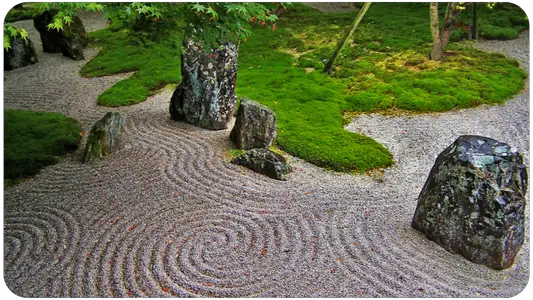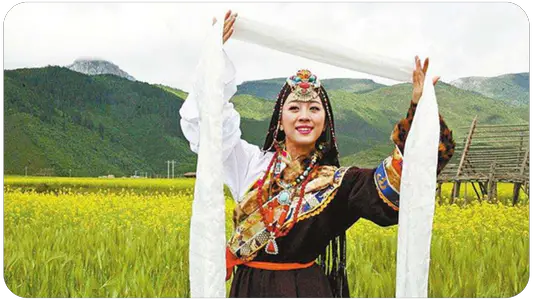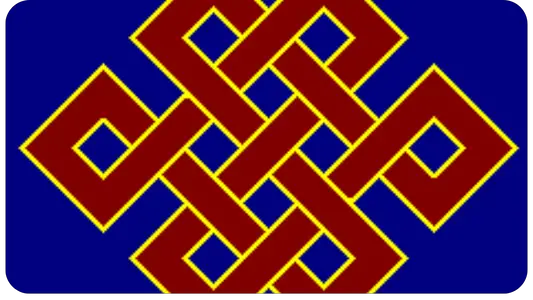Bodhisattva Kṣitigarbha (Chinese 地藏菩萨T, Dìzàng PúsàP, Korean 지장보살, 地藏菩薩 Jijang Bosal, Japanese 地蔵菩萨 Jizō Bosatsu, Tibetan Sai Nyingpo, Vietnamese Địa Tạng) is a cosmic bodhisattva of Mahāyāna Buddhism, generally depicted as a monk.
The Sanskrit name Kṣitigarbha, as well as its renderings in other Eastern languages, mean "matrix of the Earth."
Statues of Kṣitigarbha are common in Japan (where he is commonly known as Jizo) especially in cemeteries because of the popular belief that he is one of the protectors of the deceased;
he is also associated with premature or malformed infants and abortions, whom Japanese tradition says he protects from the punishment they receive for the pain they cause their parents; he is also considered a protective deity of travelers, and statues of Jizō are common along roads.
Kṣitigarbha is also a popular Taoist deity in China (where he is commonly known as Dizang); he is particularly revered in Taiwan (where he is also invoked for protection from earthquakes), Hong Kong, and among Chinese outside China, although his worship is returning to the country. His images are often found in the halls of Buddhist and Taoist temples.
Like Avalokiteśvara who renounced becoming a Buddha as long as there were souls in sorrow, Kṣitigarbha vowed not to attain the state of Buddha until all the underworld was emptied; his vow is still recited by many Buddhists today, "Not until all the underworld is emptied will I become a Buddha; Not until all beings have been saved will I ascend to Bodhi."
Story
The story of Ksitigarbha is well described in the Sutra of the Great Vow of Ksitigarbha Bodhisattva, one of the most popular sutras in Mahāyāna Buddhism;
it was recited by Gautama Buddha shortly before his death to the inhabitants of the paradise Trāyastriṃśa in gratitude and commemoration for his beloved mother, Māyādevī. He said that Kṣitigarbha had great filial love during his mortal life, which prompted him to make the great vow to liberate all sentient beings.
The Sacred Maiden
In the Kṣitigarbha Sutra, the Buddha revealed that in the distant past, Kṣitigarbha was a brahmin known as the Sacred Maiden; she was greatly distressed when her mother died because she had often slandered the three jewels.
In order to save her from the torments of Hell, the maiden sold everything she owned and used the proceeds to buy offerings that she took daily to the Buddha of her time, known as the Buddha of the Flower of Meditation and Enlightenment; she prayed fervently to the Buddha that he would help her mother so that she would be spared from the pains to which she was destined.
One day at the temple, as she was praying for this, she heard the Buddha's voice ordering her to go home at once, sit down and recite .
His name, if she wanted to know where her mother was; she carried out the order, and her consciousness was transported to the Underworld Realm, where she met a guardian who informed her that by virtue of her prayers and pious offerings, her mother had accumulated many merits, and had already been released from the Underworld from where she had ascended to Heaven.
The maiden was greatly relieved and would have been very happy, but the sight of the great sufferings she had seen in Hell touched her heart, and she vowed to do everything in her power to free those beings from their sufferings, forever in each of her future lives in the kalpas to come.
Bhikṣu
There is a legend that Kṣitigarbha appeared in China. In Tung Han, during the Ming Empire, Buddhism began to spread across the country, reaching its peak during the Tang Dynasty, and managing to spread to Japan and Korea as well; at the time monks and scholars flocked from these regions to find the Dharma in China.
One of these pilgrims was a prince of Korea, which at the time was divided into three states (Sin Lo, Banjuli and Pai Chi)-Kim Chiau Jue was prince of Sin Lo, he gave himself to monastic life under the name Dizang (Jewel of the Earth), and when he arrived in China in the Anwei region on Mount Jiuhua, he decided to build a small hut there to cultivate a small plot of land on the mountain.
According to legend, the Bhikṣu was bitten by a poisonous snake, but he did not move, so the snake went away freely; a woman who was passing by then gave the Bhikṣu some medicine to cure himself of the poison.
For a couple of years he continued to meditate in his hut, until one day a scholar named Chu-Ke led his family and a group of friends to visit the mountain; noticing the Bhikṣu meditating in the hut, they went to ascertain his condition: they noticed that the Bhikṣu's bowl contained no food, and that his hair was now very long.
Admiring at the monk's sanctity, Chu decided to build a temple to dedicate to him as an offering, and the group went down the mountain to discuss the matter with the owner of the land, Wen-Ke, who willingly agreed, and so they went up the mountain to ask the Bhikṣu how much land he needed.
He replied that he would like as much land as could be covered by his kasaya; everyone was astonished, thinking that it was not enough land to accommodate a temple, but the Bhikṣu surprised them because when he threw his kasaya into the air, the robe grew in size, until it covered the entire mountain.
Elder Wen-Ke then decided to give up the mountain completely, and became the protector of the Bhikṣu. Some time later Wen-Ke's son also left his father's home to become a Bhikṣu.
The Bhikṣu lived on Mount Jiuhua for 75 years, and died at 99. Three years after his nirvana, his tomb was opened, and it was discovered that the body had not decomposed; the relic can still be seen in the Mount Jiuhua monastery.
Because of his reputation for holiness and the miraculous episodes told of him, popular tradition held that he was one of the incarnations of Kṣitigarbha, so his cult and that of the Bodhisattva eventually merged into one.
Iconography
Traditional Iconography
In Buddhist iconography, Kṣitigarbha is typically depicted with a shaved head, dressed in a simple monk's robe (unlike many other bodhisattvas, dressed in the manner of the Indian royal family).
In his left hand, he holds the Cintāmaṇi, the wish-fulfilling jewel; in his right, a monk's staff-in Japanese shakujō (錫杖 staff with rattles?)-used to warn insects and other small animals of his arrival so as not to step on them inadvertently: this traditional staff is an attribute of high-ranking monks in Chinese Buddhist temples.
Sometimes, Kṣitigarbha wears a crown with the Five Dhyani Buddhas, an attribute of Chinese and Tibetan monks worn during tantric rituals.
In Japan, Kṣitigarbha is almost always depicted standing; in other cultures he is often seated cross-legged. Like other Bodhisattvas, he is often depicted above a lotus, symbolizing his liberation from Saṃsāra, the karmic wheel of rebirths. On his face there is sometimes a third eye, the ears may be elongated, and there may be other inhuman features, common attributes for enlightened beings.
Popular iconography in Japan
In Japan, Jizō statues are often adorned with small hoods and gags, often made and donated by the mothers of dead children; moreover, this practice is akin to that of the Maneki neko. Her features are also often childlike, a reminder of the children she protects.
In Narihira Santosen Temple in Katsushika, Tokyo, there is the famous "Jizo legato" by Ooka Tadasuke, dating from the Shōgun era; when praying for Jizō's help, the petitioner ties a string around the statue, and when the wish is granted the worshipper unties the string. In the beginning of the year ceremony, the laces of unfulfilled wishes are cut by the temple priest.
Common mistakes
Kṣitigarbha is not an equivalent of the judge of the Underworld, Yama, as many poorly practicing Buddhists, Daoists, and followers of Chinese folk religions sometimes believe.
Kṣitigarbha has sometimes been confused with Xuánzàng, the famous Chinese Tripitaka master who made a perilous journey to the West during the Tang Dynasty to retrieve the scriptures, and forms the historical basis for Sanzang, one of the main characters in the famous Chinese novel Journey to the West.
The confusion is due more to the somewhat similar depictions, as both wear a monk's robe and crown with the Five Buddhas, but no Chinese or Buddhist would ever confuse them.





